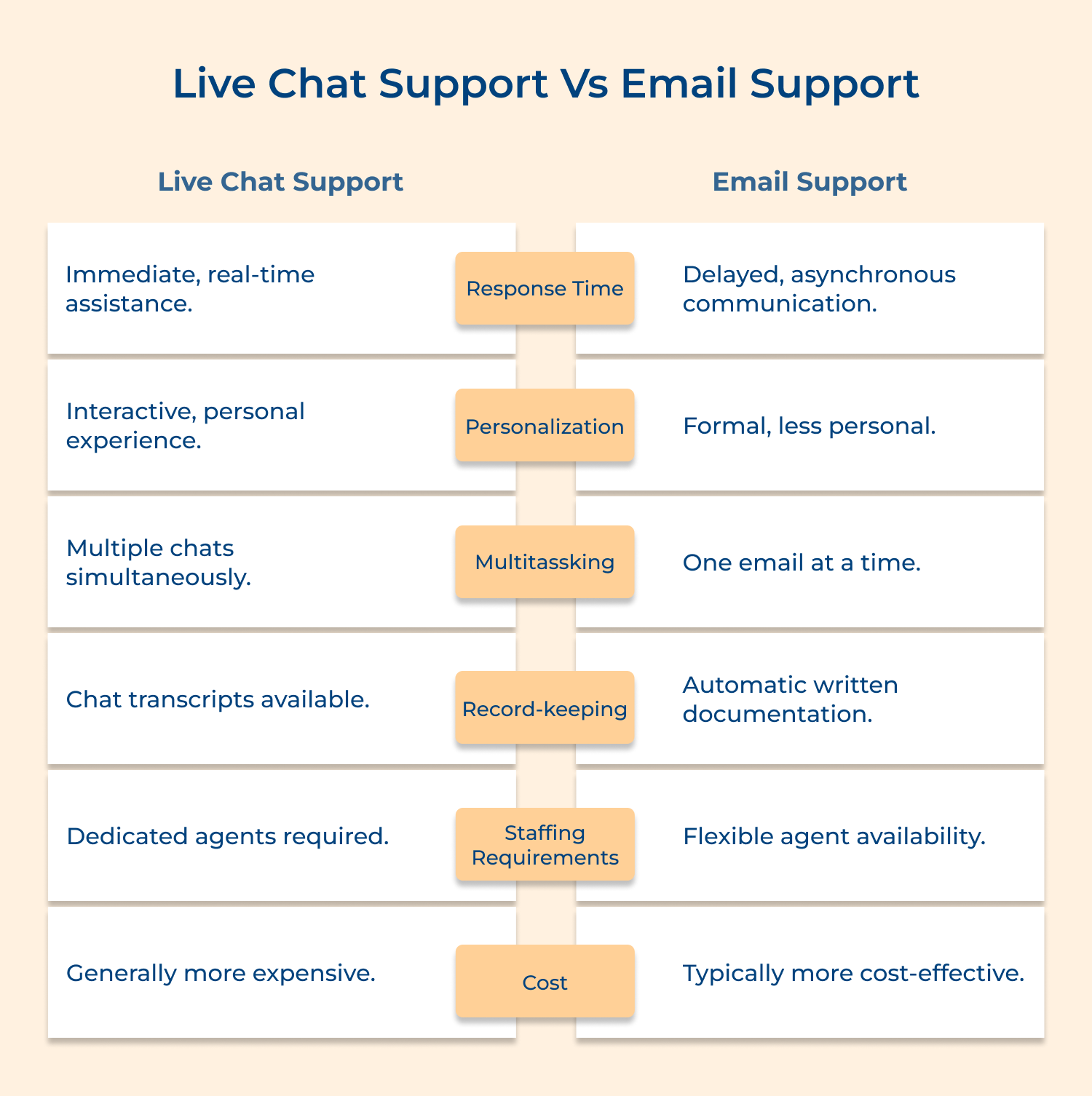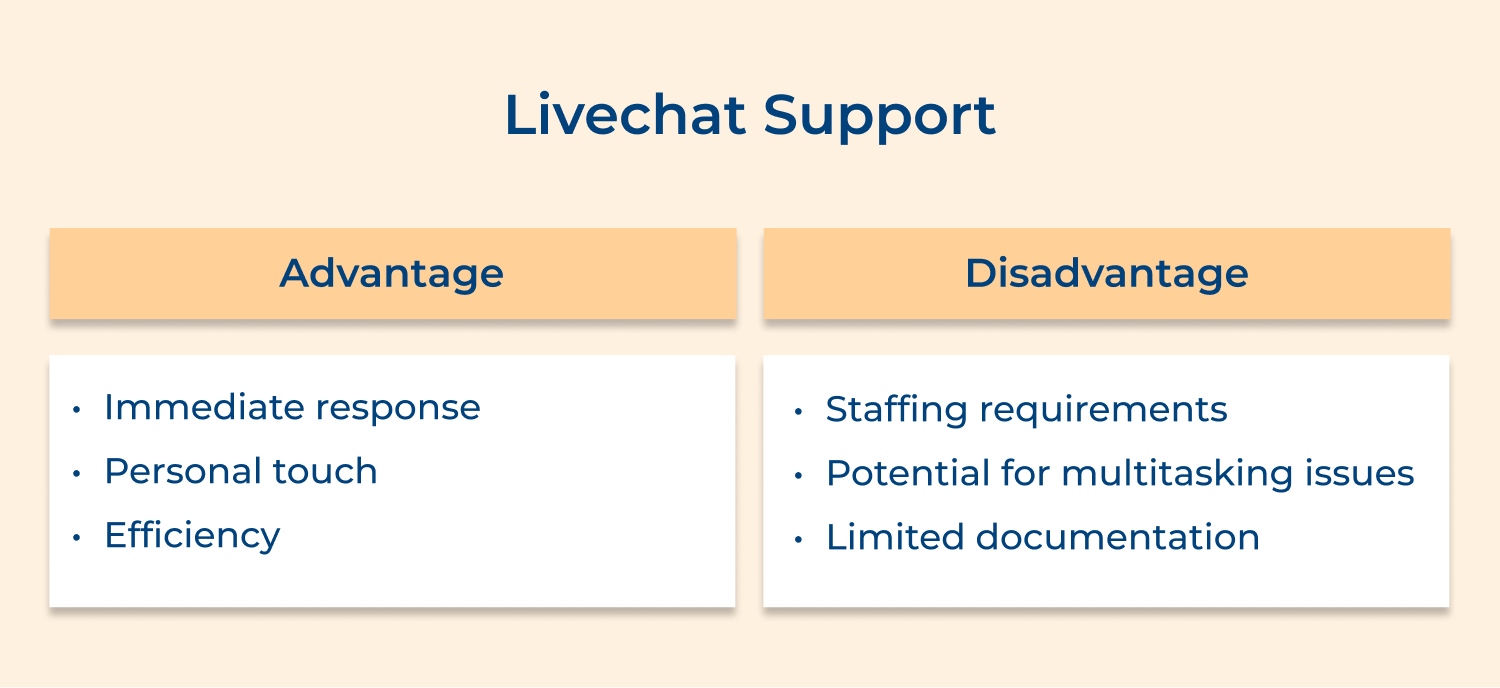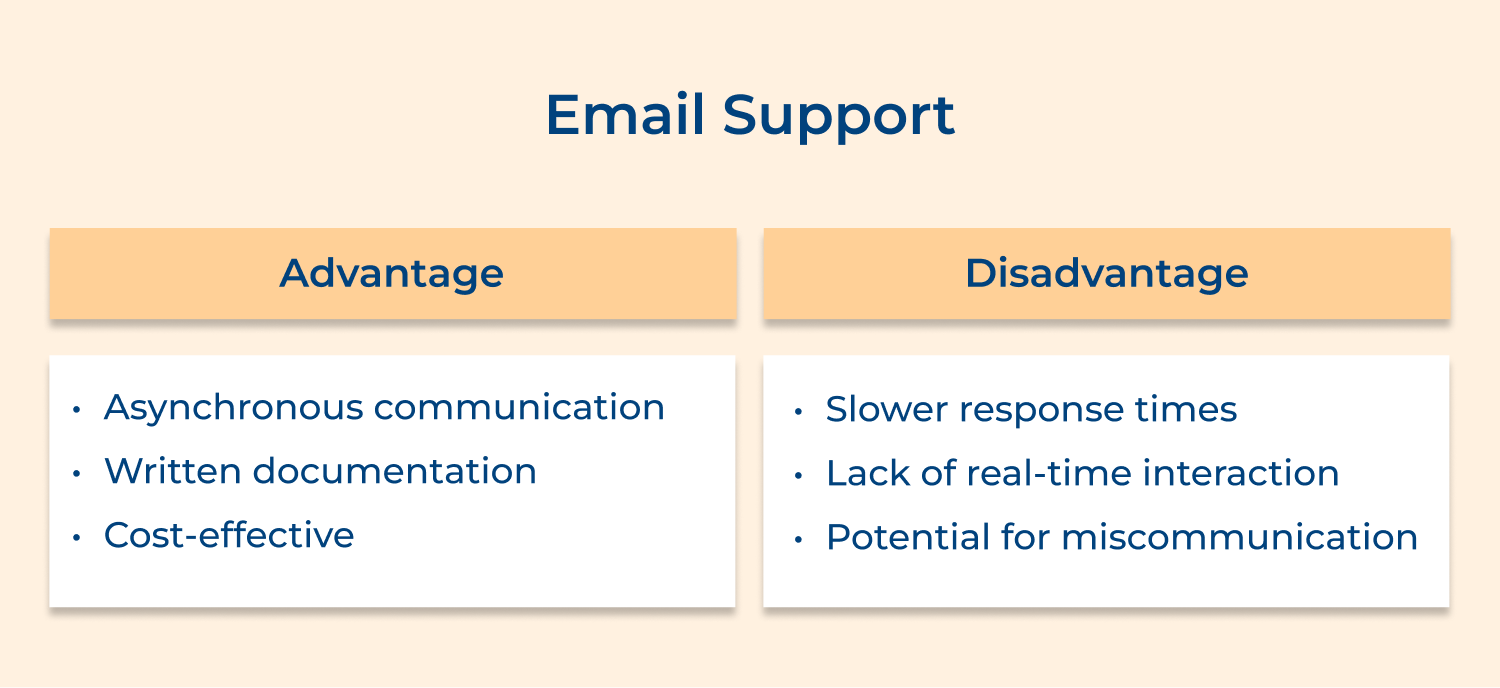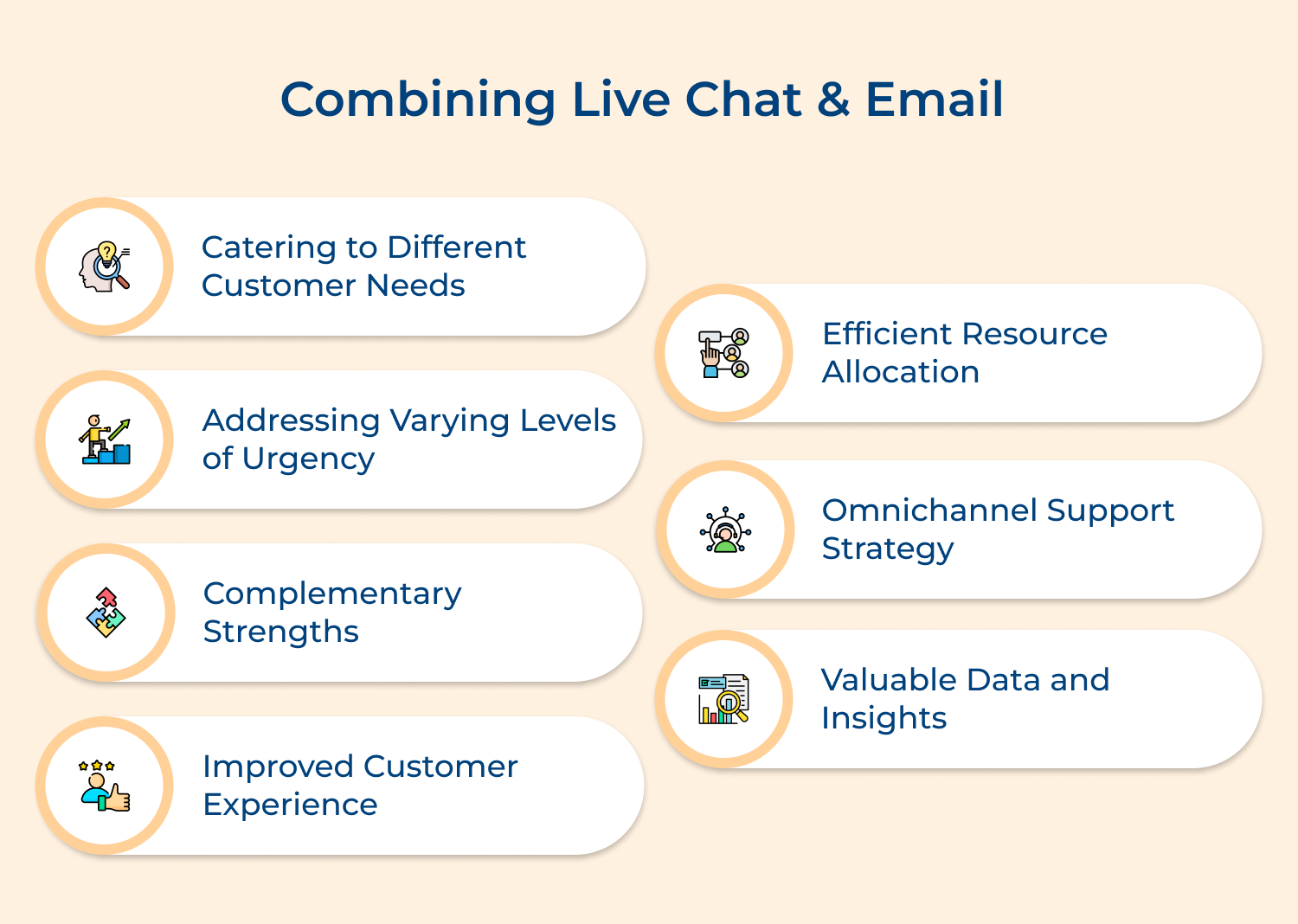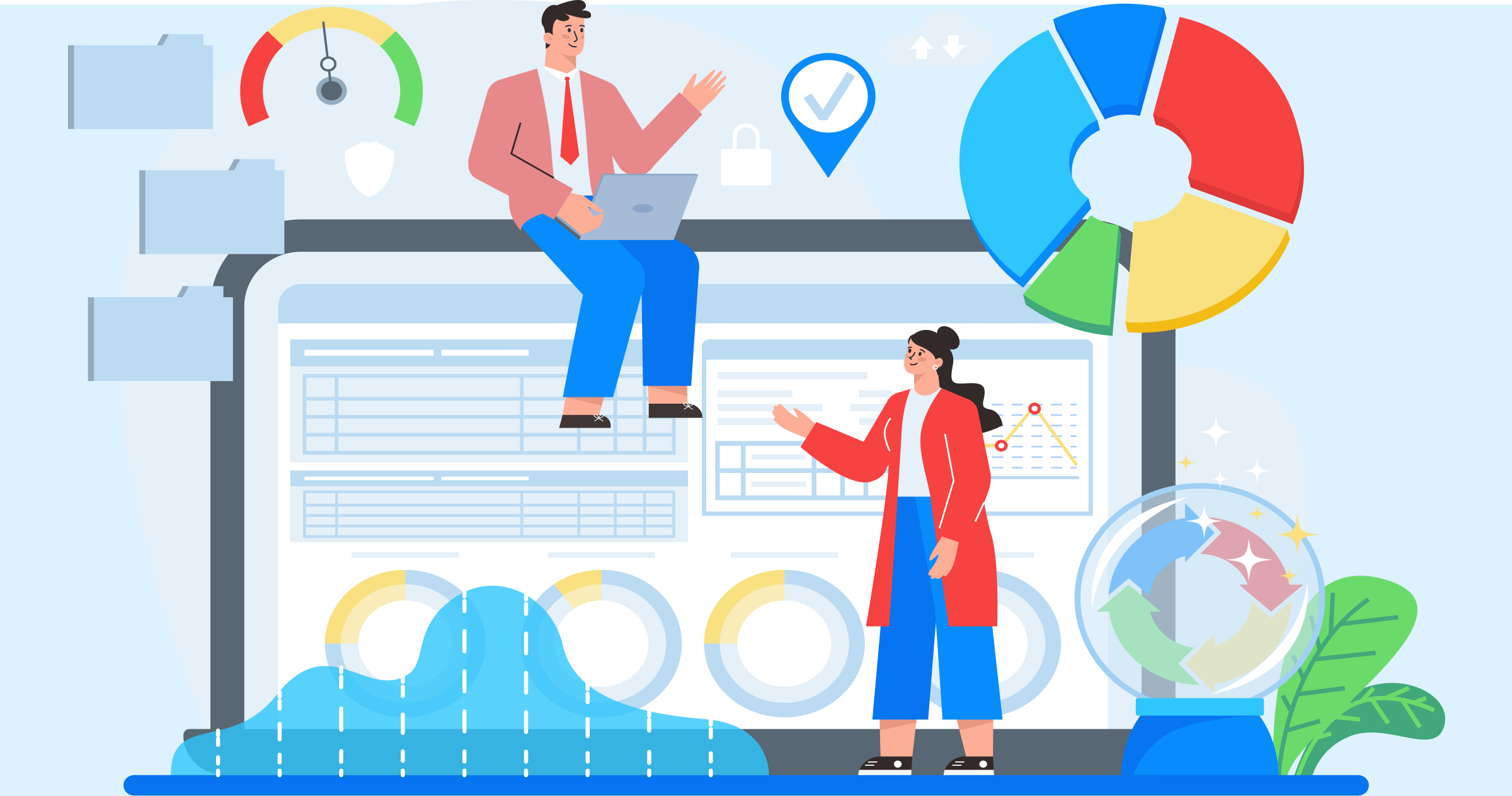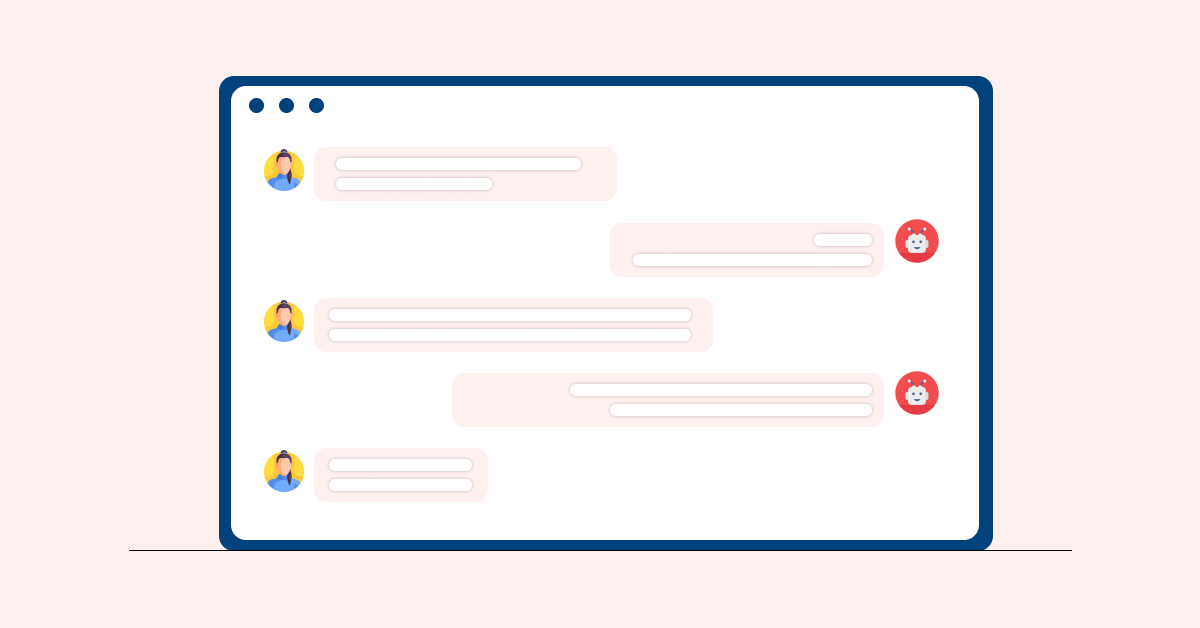1. Response Time
Live Chat Support: Provides immediate or real-time responses, allowing for instant communication and resolution of issues.
Email Support: Response times can range from a few hours to a day or more, depending on the volume of inquiries and the availability of support staff.
2. Communication Style
Live Chat Support: Allows for back-and-forth, interactive conversation, enabling immediate clarification and follow-up questions.
Email Support: Communication is asynchronous with a delay between each response, making it less suitable for complex or urgent issues that require immediate clarification.
3. Personalization
Live Chat Support: Offers a more personalized experience, as customers interact with a human representative in real-time, fostering a sense of personal connection.
Email Support: Communication is typically more formal, as it lacks the real-time interaction and personal touch of live chat.
4. Multitasking
Live Chat Support: Chat agents may need to handle multiple conversations simultaneously, which can potentially impact response times and quality of service.
Email Support: Support agents can typically handle multiple email inquiries more efficiently, as they can respond to them one by one without the pressure of real-time communication.
5. Documentation
Live Chat Support: Conversations are typically not automatically documented or recorded, making it harder to refer back to past interactions or maintain a written record.
Email Support: Provides a written record of all communication, which can be useful for reference, tracking and documentation purposes.
6. Cost and Staffing
Live Chat Support: Generally requires dedicated staff to be available during specified hours, which can be more costly to implement and maintain.
Email Support: Can be more cost-effective, as support staff can respond to inquiries as they come in, without the need for dedicated staffing during specific hours.
7. Suitability
Live Chat Support: More suitable for simple, straightforward inquiries or issues that require immediate attention or troubleshooting.
Email Support: Better suited for more complex issues that require detailed explanations, troubleshooting steps, or the exchange of files or documentation.
Live Chat Support vs Email Support: Which is The Best?
The choice between live chat and email support depends on your business’s nature and customer preferences. Selecting the right option ensures more effective customer service.
Live Chat Support

